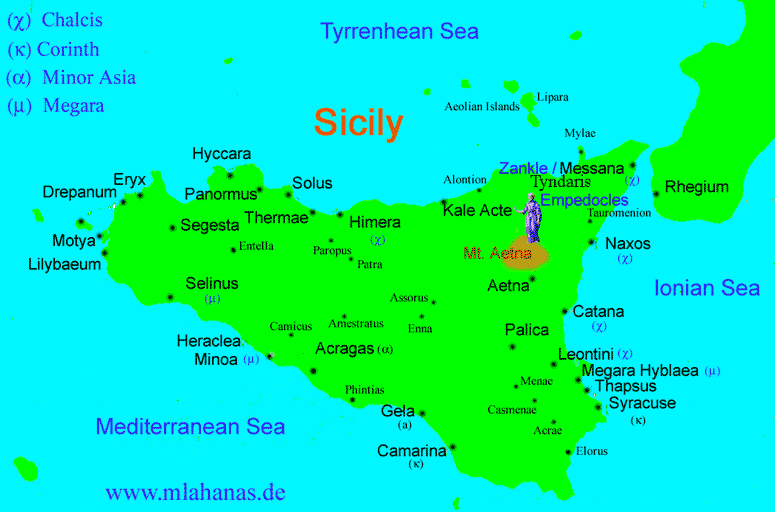.

Megara Hyblaea (perhaps identical with Hybla Major) is the name of an ancient Greek colony in Sicily, situated on the east coast, 12 miles NNW of Syracuse. It was founded in 728 BC by Megarean colonists, who had previously settled successively at Trotilon, Leontini and Thapsus.
A hundred years later it founded Selinus, apparently because it had no room for development. It never seems to have been a town of great importance, and had no advantages of position. It was destroyed by Gelon about 481 BC, and its walls seem to have been razed to the ground. In the Athenian expedition against Syracuse (415-413) Lamachus proposed (it being then deserted) to make it the Athenian base of operations; but his advice was not taken, and in the next sprint the Syracusans fortified it. In 309 it was still fortified; but after Marcellus captured it, in 214, we hear little more of it.
Excavations carried on in 1891 led to the discovery of the northern portion of the western town wall, which in one section served at the same time as an embankment against floods—it was apparently more conspicuous in the time of Philipp Cluver, (Sicilia antiqua, Leiden, 1619) p. 133— of an extensive necropolis, about 1000 tombs of which have been explored, and of a deposit of votive objects from a temple. The harbour lay to the north of the town.
About the same time Lamis arrived in Sicily with a colony from Megara, and after founding a place called Trotilus beyond the river Pantacyas, and afterwards leaving it and for a short while joining the Chalcidians at Leontini, was driven out by them and founded Thapsus. After his death his companions were driven out of Thapsus, and founded a place called the Hyblaean Megara; Thucydides Book 6
Literature
- Franco De Angelis, Megara Hyblaia and Selinous. The Development of Two Greek City-States in Archaic Sicily. Oxford University School of Archaeology Monograph No. 57. Oxford: Oxford University School of Archaeology, 2003. Pp. xxi, 247; pls. 34. ISBN 0-947816-56-9.
- 1911 Encyclopædia Britannica.
- P Orsi in Monumenti dei Lincei (1891), i. 689-950; and Atti del congresso delle scienze storiche, v. 1 81 (Rome, 1904).
| Ancient Greece
Science, Technology , Medicine , Warfare, , Biographies , Life , Cities/Places/Maps , Arts , Literature , Philosophy ,Olympics, Mythology , History , Images Medieval Greece / Byzantine Empire Science, Technology, Arts, , Warfare , Literature, Biographies, Icons, History Modern Greece Cities, Islands, Regions, Fauna/Flora ,Biographies , History , Warfare, Science/Technology, Literature, Music , Arts , Film/Actors , Sport , Fashion --- |
Retrieved from "http://en.wikipedia.org/"
All text is available under the terms of the GNU Free Documentation License


